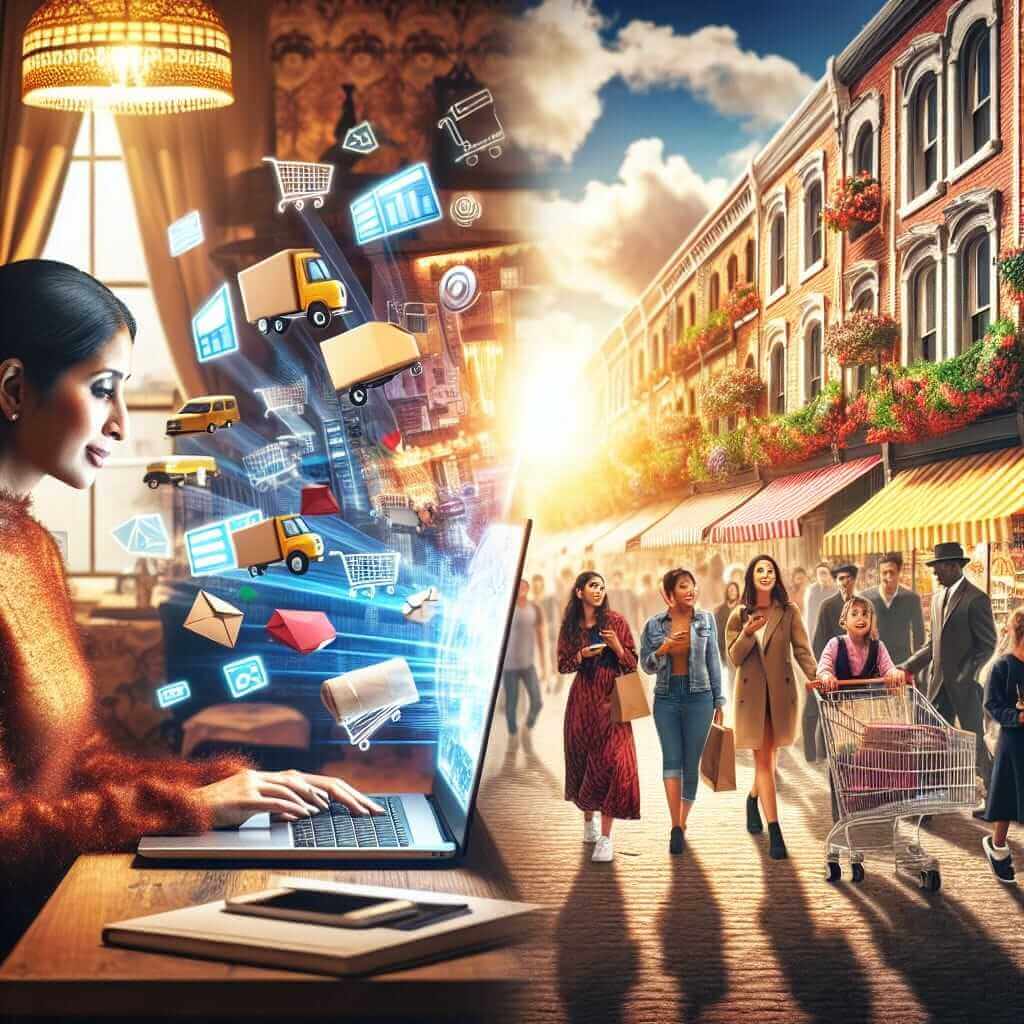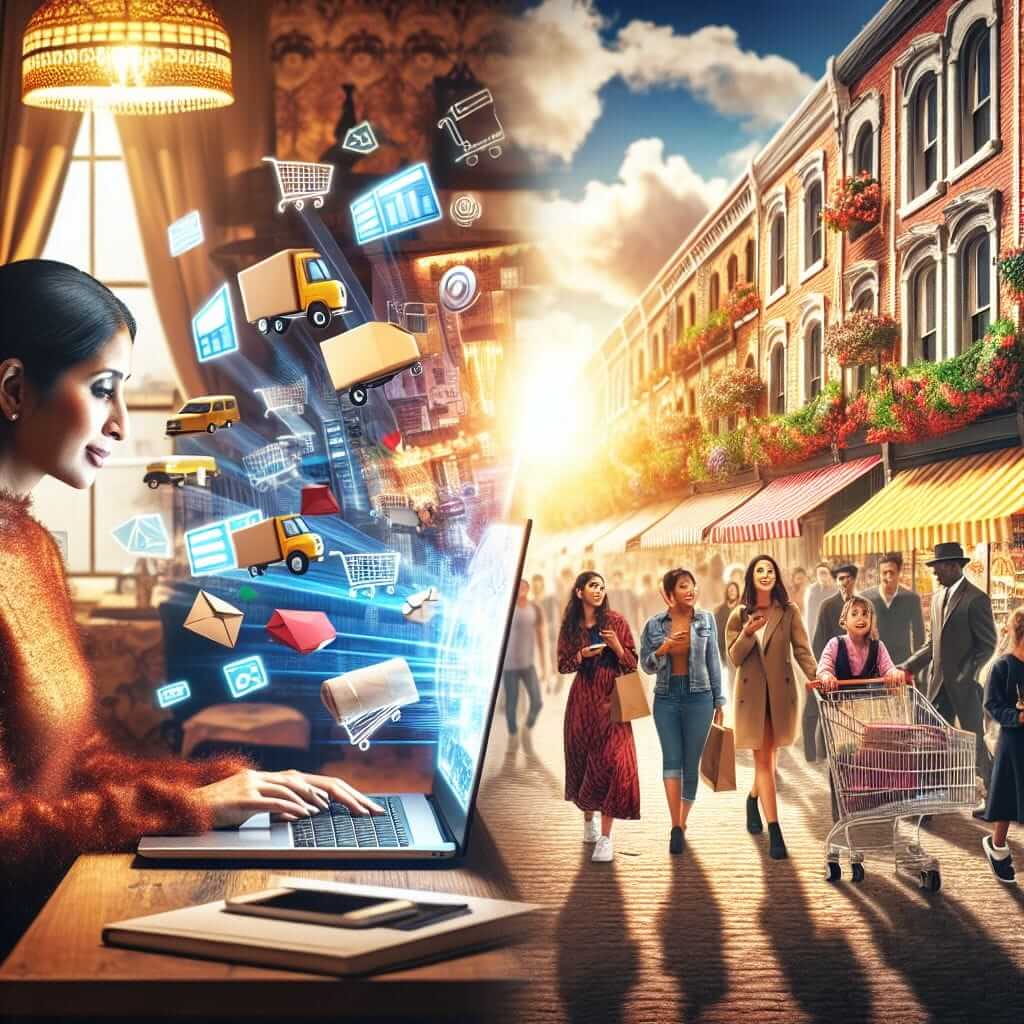The relentless rise of e-commerce has dramatically reshaped the landscape of retail, posing both challenges and opportunities for traditional brick-and-mortar businesses. This topic is highly relevant in today’s digital age and frequently appears in IELTS Writing Task 2, often prompting discussions about economic shifts, consumer behavior, and the future of retail. Let’s delve into some potential IELTS Writing Task 2 questions surrounding this theme.
Table Of Contents
Potential IELTS Writing Task 2 Questions
Based on analysis of past IELTS exams, here are a few potential essay questions related to the impact of e-commerce on traditional retail:
- “The growth of e-commerce has had a significant impact on traditional retail businesses. Some people believe that this trend will lead to the disappearance of physical stores. To what extent do you agree or disagree?” This question directly addresses the potential threat of e-commerce to physical stores, asking for your opinion on the extent of this impact.
- “Online shopping has become increasingly popular in recent years. What are the reasons for this trend, and what are the positive and negative impacts it has had on consumers and businesses?” This question explores the reasons behind the rise of e-commerce and requires a balanced discussion of its effects on both consumers and businesses.
- “Many traditional retail businesses are struggling to compete with online retailers. What measures can these businesses take to adapt to the changing market?” This question focuses on the challenges faced by traditional retailers and calls for solutions and strategies for adaptation.
Frequency and Future Trends: These themes have appeared consistently in IELTS Writing Task 2 over the past few years. Given the ongoing evolution of e-commerce and its increasing influence on our lives, it is highly probable that questions related to this topic will continue to appear in future exams.
Sample Essay Question:
“Online shopping has become increasingly popular in recent years. What are the reasons for this trend, and what are the positive and negative impacts it has had on consumers and businesses?”
Analysis of the Question
This question is a classic “causes and effects” essay prompt. You are asked to:
- Identify and explain the reasons behind the growing popularity of online shopping.
- Analyze both the positive and negative impacts of this trend on consumers.
- Analyze both the positive and negative impacts of this trend on businesses.
Remember to provide clear examples and support your arguments with relevant evidence.
Sample Essay:
Online shopping, a revolutionary product of the digital age, has witnessed an unprecedented surge in popularity in recent years. This essay will delve into the factors driving this trend and critically examine its multifaceted impacts on both consumers and businesses.
The allure of online shopping can be attributed to a confluence of factors. Firstly, the convenience it offers is unparalleled. Consumers can browse and purchase a vast array of products from the comfort of their homes, at any time of day or night, without being constrained by geographical boundaries. This is particularly appealing to individuals with busy schedules or limited access to physical stores. Secondly, the competitive pricing strategies adopted by online retailers, often driven by lower overhead costs, have made e-commerce an attractive proposition for cost-conscious consumers. Online platforms frequently offer discounts, deals, and price comparison tools, empowering shoppers to make informed purchase decisions.
The rise of e-commerce has yielded both positive and negative ramifications for consumers. On the one hand, consumers now enjoy increased convenience, wider product choices, and access to competitive pricing. The ability to meticulously compare products from different retailers and read online reviews empowers consumers to make more informed choices. Moreover, online shopping provides access to goods and services that may not be readily available locally, expanding consumer choices. On the other hand, the convenience of online shopping can lead to impulsive buying and overspending. Additionally, concerns surrounding data privacy, online security, and the potential for scams necessitate caution and vigilance from consumers.
The impact of online shopping on businesses has been equally profound. While e-commerce has created opportunities for new businesses to emerge and flourish, it has also presented significant challenges for traditional retailers. Many brick-and-mortar businesses have struggled to adapt to the changing landscape, facing declining foot traffic and reduced sales. The need to invest in online platforms, enhance digital marketing strategies, and manage logistics can strain resources, particularly for smaller businesses. However, e-commerce has also compelled many traditional retailers to innovate and enhance their offerings. By integrating online and offline channels, businesses can provide a seamless and omnichannel shopping experience for their customers, leveraging the strengths of both worlds.
In conclusion, the burgeoning popularity of online shopping is driven by factors such as convenience, competitive pricing, and expanded product choices. While it has empowered consumers and fostered competition, it has also presented challenges for traditional retailers. As e-commerce continues to evolve, it is imperative for businesses to adapt, innovate, and find ways to thrive in this dynamic landscape. (Word Count: 386)
Notes on Writing:
- Clear Structure: Ensure your essay follows a logical structure, with an introduction, clear body paragraphs addressing each part of the question, and a concise conclusion.
- Balanced View: Present a balanced discussion, acknowledging both the positive and negative aspects of online shopping.
- Supporting Evidence: Back up your claims with relevant examples and evidence. For instance, you could mention specific companies that have successfully adapted to e-commerce or discuss the impact on employment in the retail sector.
- Vocabulary: Use a range of vocabulary related to technology, business, and consumer behavior.
Difficult Vocabulary:
- Unprecedented (adjective): never done or known before. (pronounced: un-pres-i-den-tid)
- Confluence (noun): the junction of two rivers, especially rivers of approximately equal width. (figuratively) a coming together of people or things, typically with the aim of starting a new initiative or achieving a common goal. (pronounced: kon-floo-uhns)
- Multifaceted (adjective): having many different parts or aspects. (pronounced: muhl-ti-fas-i-tid)
- Unparalleled (adjective): having no parallel or equal; exceptional. (pronounced: un-par-uh-leld)
- Proposition (noun): a statement or assertion that expresses a judgment or opinion. (pronounced: prop-uh-zish-uhn)
- Ramifications (noun): a consequence of an action or event, especially when complex or unwelcome. (pronounced: ram-uh-fi-key-shuhnz)
- Meticulously (adverb): in a way that shows great attention to detail; very thoroughly. (pronounced: mi-tik-yuh-luhs-lee)
- Impulsive (adjective): acting without thinking or considering the consequences. (pronounced: im-puhl-siv)
- Flourish (verb): (of a person, business, or other activity) grow or develop in a healthy and vigorous way, especially as the result of a particularly favorable environment. (pronounced: flur-ish)
- Omnichannel (adjective): denoting or relating to a type of retail that integrates the different methods of shopping available to customers (e.g., online, in-store, or by phone). (pronounced: om-ni-chan-l)
 Online Shopping vs. Traditional Retail
Online Shopping vs. Traditional Retail
Conclusion
The impact of e-commerce on traditional retail is undeniable and complex. By understanding the key reasons for the rise of online shopping and its effects, you can craft well-informed and insightful responses to IELTS Writing Task 2 questions on this topic. Remember to use strong vocabulary, present a balanced perspective, and provide concrete examples to support your arguments.
For further practice, consider brainstorming ideas for the other essay questions listed earlier or explore related topics like the impact of technology on the job market, the changing consumer behavior in the digital age, or the future of retail in a technologically driven world.



